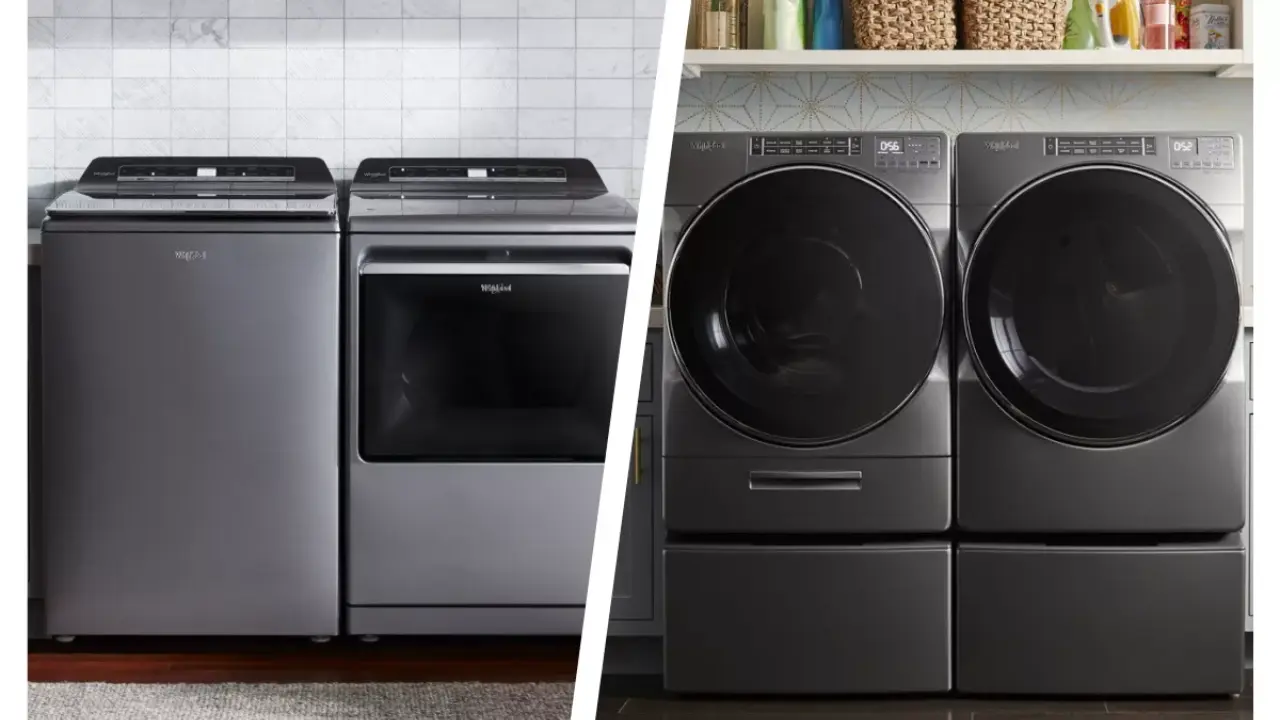When it comes to selecting a washer for your house, you must choose between a front-load and a top-load washer. Both varieties have pros and cons, and which one is best for you depends on your unique requirements and tastes. In this post, we’ll look at the differences between front-load vs top-load washers, taking into account elements like efficiency, cleaning performance, capacity, and cost. By the end, you’ll have a good idea of which sort of washer is appropriate for your household.
Efficiency
Front-load washing machines are well-known for their superior efficiency. They consume less water than top-load washers, resulting in cheaper water costs. Front-load washers also feature higher spin rates, which result in shorter drying periods and lower energy use. Top-load washers, on the other hand, are less expensive initially but may be less energy-efficient in the long term.
Cleaning Performance
Front-load washers are quite effective at cleaning. The tumbling movement of the drum, along with gravity, ensures that clothing is thoroughly cleaned. They also feature a higher RPM (revolutions per minute), which aids in the removal of stubborn stains. While top-load washers are still useful, they may not provide the same degree of cleaning performance as front-load washers.
Capacity
Front-load washers are often larger in capacity than top-load washers. This allows you to wash more items in a single load, saving both time and energy. A front-load washer is a good option if you have a big family or regularly need to wash heavy things.
Price
Top-load washers are often less expensive than front-load washers. However, the long-term expenses of running the washer, including water and energy usage, must be considered. Front-load washers may be more expensive upfront, but their efficiency might save you money over time.
Maintenance
Front-load and top-load washers both need maintenance, but the chores vary. Because of their design, front-load washers require additional effort to avoid mold and mildew development. The door seal and detergent dispenser must be cleaned regularly. Top-load washers, on the other hand, may need cleaning of the agitator or impeller regularly to ensure peak efficiency.
Water and Energy Usage
When compared to top-load washers, front-load washers consume less water and energy. Because of the horizontal drum design, garments may be raised and lowered into the water repeatedly, resulting in excellent cleaning with little water use. This saves not just water but also energy throughout the washing and drying procedures.
Space Requirements
Front-load washers may be stacked and take up less space on the floor, making them ideal for tiny laundry rooms or flats. Top-load washers, on the other hand, need more room for the lid to open and cannot be stacked with a dryer.
Noise Level
Front-load washers are usually quieter to operate than top-load washers. Front-load washers’ superior technology and insulation contribute to a more quiet washing experience.
Spin Speed
Front-load washers offer faster spin rates, which drain more water from the clothing and shorten drying time. Top-load washers have slower spin rates, resulting in longer drying periods.
Durability
Both front-load and top-load washers are built with durability in mind, designed to withstand heavy use and last for a long time. On the other hand, manufacturers often make front-load washers with more sophisticated features and materials, which makes them somewhat more durable than top-load washers.
Accessibility
Front-load washers offer a low-profile design that makes loading and unloading washing simpler. Individuals with mobility limitations or those who want a more ergonomic laundry experience may benefit from this. To load and unload top-load washers, you must reach over the top.
Design Options
Manufacturers often design front-load washers in sleek and contemporary styles, offering a variety of color choices to match your home décor. Top-load washers are often more conventional in style and have fewer color options.
Installation Flexibility
Front-load washers provide installation versatility. You can stack them with a dryer to save space, or you can place them on a pedestal for additional height and storage. On the other hand, top-load washers are designed to stand alone and do not allow for stacking.
Conclusion
Your demands and preferences influence the decision between a Front-Load vs. Top-Load washer. If you value efficiency, cleaning performance, and higher capacity, a front-load washer is an excellent alternative. If cost-effectiveness and ease of maintenance are important to you, a top-load washer may be the superior choice. To make an educated selection for your house, consider issues such as space availability, design preferences, and long-term expenditures.
Frequently Asked Questions (FAQs)
1. How do front-load washers save energy?
Front-load washers save energy by using less water and having higher spin speeds, which reduce drying time and energy consumption.
2. Can I use regular detergent in a front-load washer?
Yes, regular detergent can be used in Front-Load vs. Top-Load washers. However, it’s recommended to use high-efficiency (HE) detergent for optimal cleaning performance and to prevent excess suds.
3. Are top-load washers more affordable than front-load washers?
Top-load washers are generally more budget-friendly initially, but front-load washers can save money in the long run due to their energy and water efficiency.
4. Do front-load washers require more maintenance?
Front-load washers require regular maintenance to prevent mold and mildew growth. Cleaning the door seal and detergent dispenser is important to maintain optimal performance.
5. Are there any specific plumbing requirements for installing a front-load washer?
Front-load washers typically require a standard water hookup and drainage system. Ensure that you have the necessary plumbing connections in place before installation.

